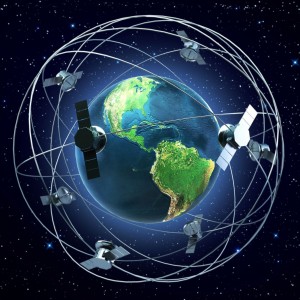Having spent the last few weeks looking at the developing capabilities in Earth Observation (EO) for certain countries, this week we’re looking at the wider picture and having a more detailed look at the overall number of operational satellites who have a main purpose of EO or Earth Science, or where one of these is the joint main purpose.
We’re using the latest update of the Union of Concerned Scientists (UCS) satellite database, which lists the operational satellites in orbit on the 30th April 2021; we acknowledge that this is slightly out of date due to the launches taken place over the last couple of months, but it is the best source of information available.
According to the UCS there were 971 EO satellites in orbit on the 30th April. For context, when we did a similar report with the end of April 2018 there were only 684 satellites, so there has been a 41.95% increase over the last three years. Whilst this is significant growth, in January 2014 there were only 192 EO satellites according to the UCS database which means over 400% growth in seven years!
A lot of this is down to the development, and launch, of cubesats; together with the significant increase in commercial players coming into the EO industry. We’re going to look at these satellites in a bit more detail:
What do Earth observation satellites do?
Whilst the 971 satellites we are looking at have a purpose of EO or Earth Science, there are further details on their specific roles, which shows that there are:
- Optical Imaging: 407 satellites.
- Radar imaging: 81 satellites.
- Hyperspectral/Multispectral imaging: 38 satellites.
- Infrared imaging: 10 satellites.
- Meteorology: 159 satellites.
- Earth Science: 75 satellites.
- Electronic intelligence: 93 satellites.
- Video: 10 satellites.
- Automatic Identification System (AIS): 17 satellites.
- Other purposes: 11 satellites.
- 70 satellites simply list EO as their purpose.
Countries with the most Earth observation satellites
There are almost 60 individual countries which are listed in the database as controlling EO satellites. The USA is way out in front, and China in second also controls considerably more satellites than the next countries. The top seven are:
- USA with 440 satellites.
- China with 216 satellites.
- Japan with 36 satellites.
- Russia with 35 satellites.
- India with 23 satellites.
- European Space Agency with 20 satellites (although it is acknowledged that this is a multi-country operation, rather than a single country).
- Argentina with 18 satellites.
Who controls the EO satellites?
Having seen the countries who lead the way on EO, the organisations that control the most EO satellites will probably not be a huge surprise. There are almost 200 different organisations listed as controlling EO satellites, although many of these are simply different departments of a larger body as seen below. The top ten operators of satellites are:
- Planet Labs Inc with 197 satellites.
- Spire Global Inc with 114 satellites
- Chinese Ministry of National Defense with 71 satellites
- America’s National Reconnaissance Office (NRO) with 39 satellites
- Chang Guang Satellite Technology Co. Ltd. With 23 satellites
- Russia’s Ministry of Defense with 19 satellites.
- Indian Space Research Organization (ISRO) with 17 satellites
- Satellogic S.A. with 16 satellites
- China National Academy of Sciences (CNSAS) with 15 satellites
- EUMETSAT (European Organization for the Exploitation of Meteorological Satellites) with 12 satellites
Of the commercial companies in the list Planet and Spire are American, the Chang Guang Satellite Technology Company is Chinese, and Satellogic is Argentinean.
Who uses the Earth observation satellites?
The users for the operational EO satellites listed by the UCS are:
- 96% of users are Commercial users.
- 18% of users are Government users.
- 19% of users are Military users.
- 68% of users are Civil users.
It should be noted that some of these satellites have multiple users.
What are the orbits of the Earth observation satellites?
Of the operational satellites in orbit:
- 912 (93.92%) are in Low Earth Orbits (LEO) equating to 93.92% of the EO satellites.
- 44 are in Geostationary Earth Orbits (GEO) – 4.53% .
- 1 is in a medium Earth orbits (MEO) – 0.1%.
- 14 are in elliptical orbits – 1.44%.
Interesting Facts
A few interesting facts about the EO satellites:
- Oldest operational satellite is the Brazilian SCD-1 (Satélite de Coleta de Dados) satellite, which was launched on the 9th February 1993. Its purpose is meteorology/Earth Science and is operated by Instituto Nacional de Pesquisas Espaciais (INPE).
- The satellite which has the highest point is the Russian meteorology satellite Arktika-M1 operated by the Naval Physical and Oceanographic Laboratory. It is on an elliptical orbit and has a high point of 39,754 km above the Earth.
- The heaviest EO satellite launched is listed as USA314 a recently launched satellite by the American National Reconnaissance Office that had a launch weight of 20,000 kg.
- The satellite with the quickest orbit of the Earth is the India Space Research organisation satellite CartoSat 2E which has an orbit time of 91.34 minutes.
What’s next?
There are a number of commercial companies looking to increase their constellations, and we are currently seeing a growth in hyperspectal, SAR and video satellites and so it is expected that the number of EO satellites will continue to grow. In turn, this means the amount of EO data available will continue to increase, and it is up to the industry to put it to good use!



